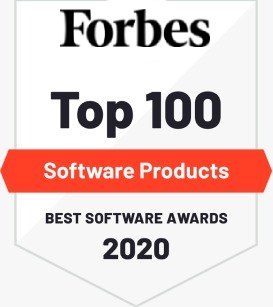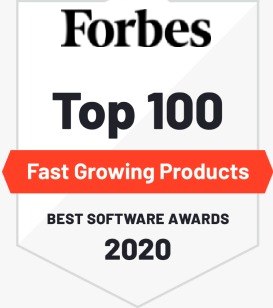|
|
Lecture 1
|
Introduction
|
00:00:53 Duration
|
|
|
Lecture 2
|
Course Project
|
00:01:53 Duration
|
|
|
Lecture 3
|
Meaning of project and Project Management
|
00:02:29 Duration
|
|
|
Lecture 4
|
Key characteristics of a project
|
00:02:45 Duration
|
|
|
Lecture 5
|
Position of Monitoring and Evaluation in project management cycle
|
00:02:41 Duration
|
|
|
Lecture 6
|
What is monitoring
|
00:02:36 Duration
|
|
|
Lecture 7
|
Types of Monitoring
|
00:03:40 Duration
|
|
|
Lecture 8
|
What is Evaluation
|
|
|
|
Lecture 9
|
Types of Evaluation
|
00:05:42 Duration
|
|
|
Lecture 10
|
Evaluation Criteria
|
00:05:18 Duration
|
|
|
Lecture 11
|
Objectives of Monitoring and Evaluation
|
00:02:44 Duration
|
|
|
Lecture 12
|
Differences between Monitoring and Evaluation
|
00:03:45 Duration
|
|
|
Lecture 13
|
Components of Monitoring and Evaluation systems
|
00:02:13 Duration
|
|
|
Lecture 14
|
Meaning of monitoring and Evaluation system
|
00:01:32 Duration
|
|
|
Lecture 15
|
Who should be involved in M&E activities
|
|
|
|
Lecture 16
|
Introduction to result chain
|
00:02:05 Duration
|
|
|
Lecture 17
|
Result chain in details
|
00:07:56 Duration
|
|
|
Lecture 18
|
What is logical framework
|
00:01:32 Duration
|
|
|
Lecture 19
|
Description of Logical Framework
|
00:02:52 Duration
|
|
|
Lecture 20
|
Indicators
|
|
|
|
Lecture 21
|
Means of verification
|
00:02:46 Duration
|
|
|
Lecture 22
|
Risks and Assumptions
|
00:02:24 Duration
|
|
|
Lecture 23
|
How Assumptions work in Log-frame
|
00:01:40 Duration
|
|
|
Lecture 24
|
Background to logical framework
|
00:02:44 Duration
|
|
|
Lecture 25
|
Designing logical Framework
|
|
|
|
Lecture 26
|
Designing logical Framework Sample two
|
00:09:19 Duration
|
|
|
Lecture 27
|
When do we use logical Framework
|
|
|
|
Lecture 28
|
SMART Indicators
|
00:03:44 Duration
|
|
|
Lecture 29
|
Introduction to M&E Framework
|
00:01:46 Duration
|
|
|
Lecture 30
|
Structure and Format of M&E Framework
|
00:03:02 Duration
|
|
|
Lecture 31
|
M&E Framework sample
|
00:05:39 Duration
|
|
|
Lecture 32
|
Introduction to M&E Methods
|
00:02:11 Duration
|
|
|
Lecture 33
|
Direct Observation
|
00:03:41 Duration
|
|
|
Lecture 34
|
Surveys or interviews
|
00:02:51 Duration
|
|
|
Lecture 35
|
Focus group discussions
|
00:02:48 Duration
|
|
|
Lecture 36
|
Pile-ranking exercise
|
00:02:42 Duration
|
|
|
Lecture 37
|
Data triangulation
|
00:02:48 Duration
|
|
|
Lecture 38
|
Introduction to M&E Tools
|
00:04:14 Duration
|
|
|
Lecture 39
|
Data Types
|
00:03:06 Duration
|
|
|
Lecture 40
|
What influences tools choice
|
|
|
|
Lecture 41
|
Questionnaire
|
00:03:22 Duration
|
|
|
Lecture 42
|
Designing Questionnaire
|
00:06:17 Duration
|
|
|
Lecture 43
|
Tips on questionnaire designing
|
00:03:33 Duration
|
|
|
Lecture 44
|
Practical questionnaire designing
|
00:09:44 Duration
|
|
|
Lecture 45
|
Focus group discussion guide
|
00:04:54 Duration
|
|
|
Lecture 46
|
Practical Focus group discussion guide designing
|
00:05:10 Duration
|
|
|
Lecture 47
|
Key Informant Interview Guide
|
00:03:00 Duration
|
|
|
Lecture 48
|
Practical Key Informant interview Guide formulation
|
00:04:04 Duration
|
|
|
Lecture 49
|
Observation checklist
|
00:02:00 Duration
|
|
|
Lecture 50
|
Sample Observation checklist
|
00:03:36 Duration
|
|
|
Lecture 51
|
Beneficiary sign in sheet
|
00:03:00 Duration
|
|
|
Lecture 52
|
Sample sign in sheet
|
00:02:50 Duration
|
|
|
Lecture 53
|
Introduction to sampling
|
00:04:05 Duration
|
|
|
Lecture 54
|
Representative random sampling
|
00:06:08 Duration
|
|
|
Lecture 55
|
Purposive sampling
|
00:03:10 Duration
|
|
|
Lecture 56
|
Introduction to research ethics and informed consent
|
00:03:13 Duration
|
|
|
Lecture 57
|
Obtaining informed consent from respondents or beneficiaries
|
00:03:35 Duration
|
|
|
Lecture 58
|
Research Misconduct in M&E
|
00:03:40 Duration
|
|
|
Lecture 59
|
Causes of poor data quality
|
00:03:28 Duration
|
|
|
Lecture 60
|
Monitoring data quality during collection process
|
00:03:02 Duration
|
|
|
Lecture 61
|
Introduction to data Analysis
|
00:02:42 Duration
|
|
|
Lecture 62
|
Quantitative data analysis
|
00:01:41 Duration
|
|
|
Lecture 63
|
Using Mean, Frequency, Percentage, Range and Standard deviation
|
00:11:05 Duration
|
|
|
Lecture 64
|
Bar charts
|
00:06:11 Duration
|
|
|
Lecture 65
|
Stacked bar chart
|
00:03:50 Duration
|
|
|
Lecture 66
|
Pie Chart
|
00:03:16 Duration
|
|
|
Lecture 67
|
Line graph
|
00:02:46 Duration
|
|
|
Lecture 68
|
Scatter plot
|
00:01:57 Duration
|
|
|
Lecture 69
|
Cross tabulation
|
00:02:20 Duration
|
|
|
Lecture 70
|
Qualitative data analysis
|
00:16:03 Duration
|


